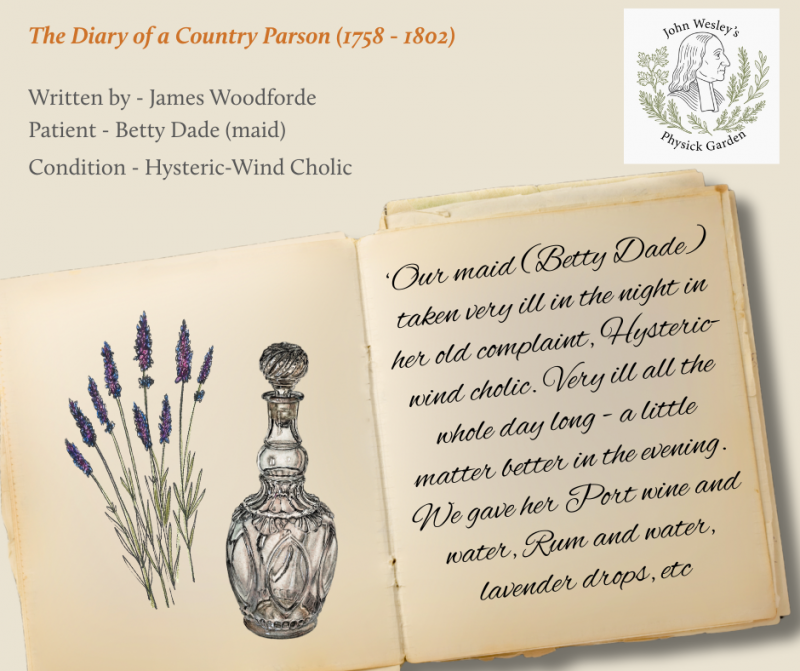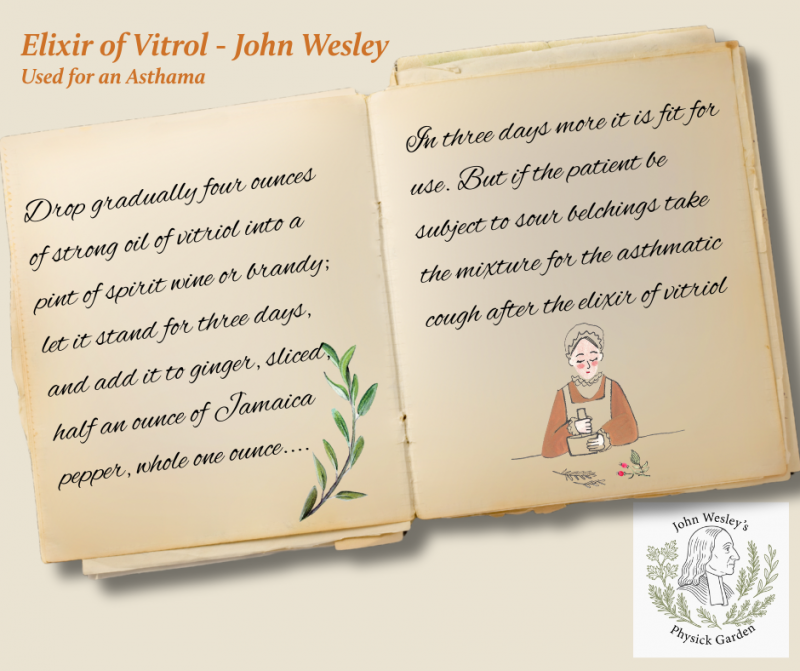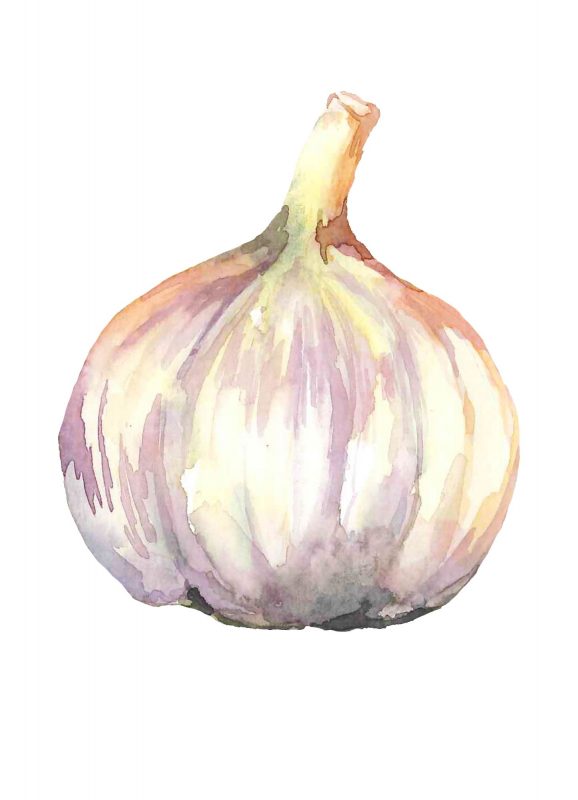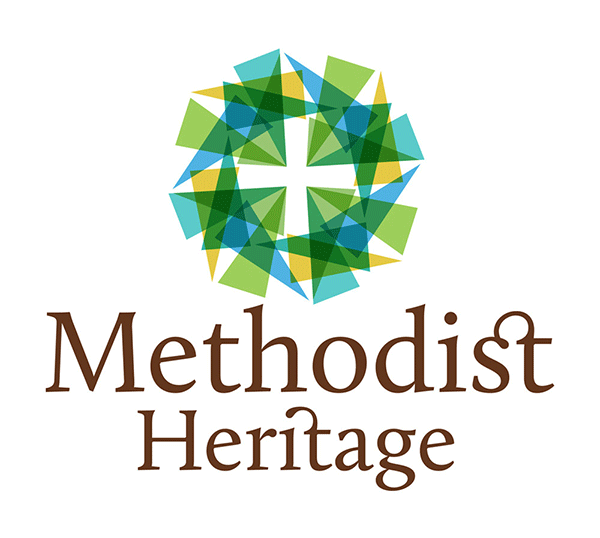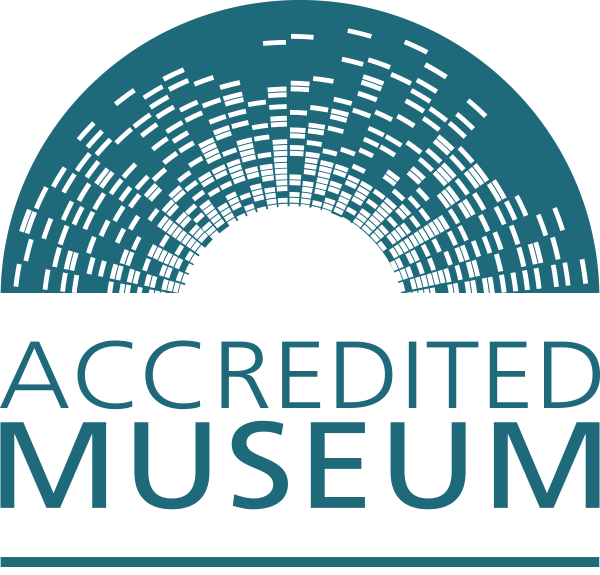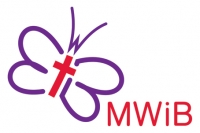The numbers listed under each plant are the number of the remedy as it appears in the 1780 edition of Primitive Physick.
Nettles (Urtica dioica)
Nettles, were historically used in folk medicine to treat symptoms of coughs and colds.
Wesley’s recommendations:
176 – The Pleaurisy – Take a decoction of nettles, and apply the boiled herb hot as a poultice.
The Pleurisy – Take half a drachum of soot – JOHN WESLEY
Other therapies
Stinging nettles are fantastic plants for wildlife, and over 100 species of invertebrates use them as a food plant, including small tortoiseshell, red admiral, comma, painted lady and peacock butterflies, and garden tiger, flame and buff ermine moths.
Apple (Malus domestica)
A 14th century Italian medical book mentions that apples cure more effectively when served hot and sprinkled with sugar and other spices. These roasted or baked apples were thought to ease digestion after a big meal. Raw apples kept monks regular in the 14th and 15th centuries, and some believed that an apple at the start of the meal stimulated the stomach and heart, whilst at the end of the meal, gave teeth a fairly good clean.
Wesley’s recommendations:
10 – A Dry or Convulsive Asthma – The best drink is apple water, that is boiling water poured on sliced apples.
32 – Chin-Cough or Hooping-Cough – (for a child) Boiled apples put into warm milk may be his chief food.
49 – A Consumption – For diet, use milk and apples, or watergruel made with fine flour. Drink cyder-whey. barley water, sharpened with lemon juice or apple water.
176 – The Pleurisy – Take out the core of an apple, fill it up with white frankincense, stop it close with the piece you cut out, and roast it in ashes. Mash and eat it.
To appease the cough take often a little at a time, of roasted apples, strawberries, raspberries or currents.
Other therapies
“An apple a day, keeps the doctor away”, originated in Wales in 1866 as “Eat an apple on going to bed, and you’ll keep the doctor from earning his bread” and was popularized in its modern form by 1913. While the phrase is a cultural symbol of healthy habits, scientific evidence supports the health benefits of apples due to their content of fiber, vitamins, minerals, and antioxidant compounds like flavonoids. Apple-based medicines from the Middle ages were applied to the skin and some apples also appeared on ingredient lists for beauty products. The origin of the word pomade, the waxy substance used to style hair, traces its name to apple pulp.
Elder (Sambucus)
It was said that an elder planted by your house would keep the devil away and it is also known as the ‘Judas tree’ as Judas Iscariot is said to have hanged himself from an elder tree. Elder foliage was once used to keep flies away and branches were often hung around dairies.
Wesley’s recommendations:
176 – The Pleurisy – in disorders of this kind Dr Huxham advises “Sip almost continuously thin whey, barley water, or hyssop tea……Likewise camphorated vinegar, with syrup of elder or raspberries is good”.
Other therapies
Elder flowers have anti-inflammatory and anti-allergy effects, specifically for the upper respiratory tract and sinuses, and can be used with nettles to remedy hay fever. Elderberries are high in flavonoids and anti-oxidants and also contain vitamin A and C. They work as anti-virals, helping protect from colds and flu in the winter months.
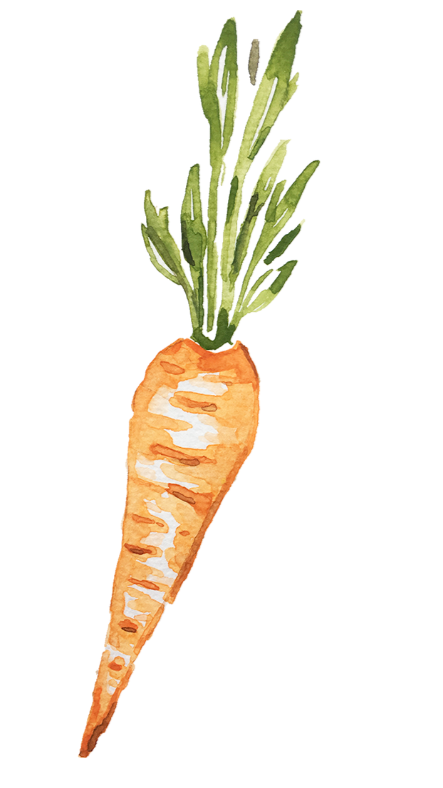 Carrots (Daucus carota)
Carrots (Daucus carota)
Early cultivated carrots were developed for their sweetness and were often purple or yellow before the modern orange variety emerged in 16th-century Holland.
Wesley’s recommendations:
9 – An Asthma – Live a fortnight on boiled carrots only. It seldom fails.
Other therapies
The wild form of the carrot often used in medicine, with its seeds used in concoctions for painful urination and even contraception. During WWII, British propaganda suggested that carrots improved night vision to conceal the effectiveness of their new airborne radar technology, a myth that still persists today.
Turnip (brassica rapa)
The medicinal knowledge of the turnip is ancient, with many uses documented in classical Greek texts by figures like Dioscorides and later adopted in traditional Islamic medicine. In traditional Chinese medicine it was used to help the body expel phlegm.
Wesley’s recommendations:
60 – An Inveterate Cough – Peel and slice a large turnip, spread course sugar between the slices, and let it stand in a dish until till all the juices drains down. Take a spoonful of this when you cough.
Other therapies
Modern research highlights a turnip’s anti-inflammatory, antioxidant, and potential anticancer properties due to compounds like glucosinolates and isothiocyanates. They may also support heart health, bone strength, liver function, and neurological health by fighting inflammation and providing essential minerals and antioxidants.
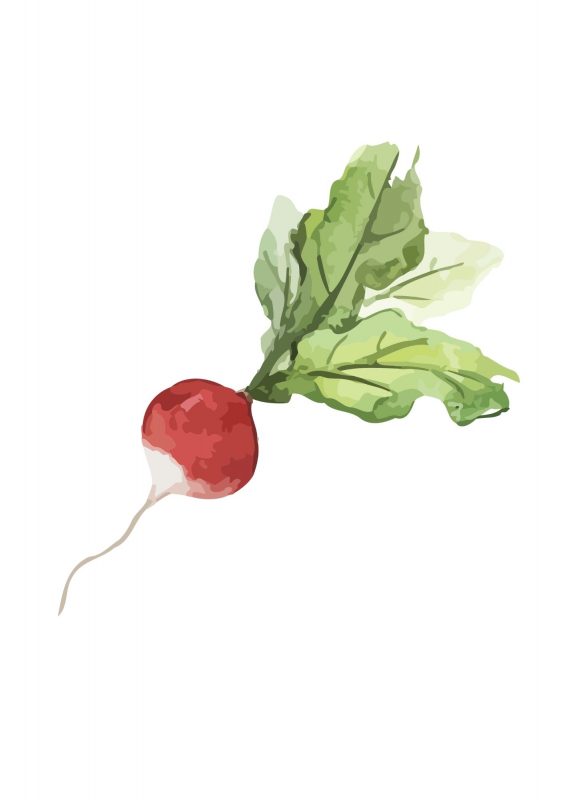 Radish (Raphanus sativus)
Radish (Raphanus sativus)
The Latin Raphanus, comes from Greek words for “quickly appearing,” referencing the plant’s fast germination. The common name “radish” itself derives from the Latin word radix, meaning root. Asaph the Jew, who is mentioned in the ancient Jewish medical text the Sefer Refuot – the earliest known medical book written in Hebrew – noted that radish leaves increased mucus.
Wesley’s recommendations:
10 – A Dry or Convulsive Asthma – Juice of radishes relives much.
Other therapies
Radish are used in herbal medicine to help with symptoms of colds, coughs, asthma, and bronchitis and some recent studies suggest radish can help manage blood sugar levels.
Lemon (Citrus x limon)
Archaeological evidence shows that lemons have been cultivated for over 4,000 years, and were brought out of Asia around the 200 BC where they are said to have been used in Israel as part of Jewish rituals. In medieval Europe, lemons were used to treat seasickness, gastrointestinal disorders and migraines. In Tudor England, lemon cordials known as “Water Imperials” were popular among the nobility, who would drink them for healing.
Wesley’s recommendations:
49 – A Consumption – For diet, use milk and apples, or watergruel made with fine flour. Drink cyder-whey. barley water, sharpened with lemon juice or apple water.
56 – A Cough – Make a hole through a lemon and fill it with honey. Roast it and catch the juice. Take a teaspoon of this frequently.
176 – The Pleurisy – in disorders of this kind Dr Huxham advises “Sip almost continuously thin whey, barley water, or hyssop tea, sharpened with vinegar and water or lemon juice.
For a convulsive cough eat preserved walnuts – JOHN WESLEY
Other therapies
In modern medicine, lemons are recognized for their vitamin C content, which supports immunity, wound healing, and tissue repair, and their citric acid, which may help prevent kidney stones and aid digestion.
Garlic (allium sativum)
The physician Galen, writing in the 2nd century called garlic the ‘rustic’s theriac’ or a ‘cure-all’. In the 17th century, Thomas Sydenham valued it for treating smallpox, and William Cullen’s Materia Medica of 1789 found it cured the dropsy.
Wesley’s recommendations:
10 – A Dry or Convulsive Asthma – garlic either raw or preserved or in a syrup.
Other therapies
Research from 2016 found that aged garlic extract boosts the immune system. Other recent research suggests that the compounds in garlic may have antiviral properties.
Sorrel (Rumex acetosa)
Sorrel has been used medicinally for scurvy, digestive disorders and as a cooling agent.
Wesley’s recommendations:
49 – A Consumption – Boil two handsful of sorrel in a pint of whey, strain it and drink a glass thrice a day.
Other therapies
Today, sheep sorrel is an ingredient in some alternative cancer treatments like ‘Essiac tea’, and current research explores sorrel’s antioxidant, anti-inflammatory, and heart-health benefits.
Ivy (Hedera helix)
In 1597, the British herbalist John Gerard recommended water infused with ivy leaves as a wash for sore or watering eyes.
Wesley’s recommendations:
49 – A Consumption – Turn a pint of skimmed milk with half a pint of small beer. Boil in this whey about twenty ivy leaves, and two or three sprigs of hyssop. Drink half overnight, the rest in the morning. Do this if needful, for two months daily. This has cured a desperate case.
For Consumption – every morning cut a little turf of fresh earth, and laying down, breathe in the hole for a quarter of an hour – JOHN WESLEY
Other therapies
A 2020 evidence review found that ivy “may be a therapeutic option for treating early symptoms of respiratory tract infections”, saying that “the best effectiveness for H. helix preparations has been proven for coughing, as an expectorant and to reduce the frequency and intensity of cough.”
Watercress (Nasturtium officinale)
Watercress is one of the oldest known salad leaves; around 400 BC on the Island of Kos, Hippocrates, the father of medicine, is said to have located his first hospital beside a stream so that he could grow a plentiful supply of watercress to help treat his patients. Ancient Romans thought that eating watercress would cure mental illness, whilst the 12th century mystic Hildegard of Bingen thought eating it steamed and drinking the water would cure jaundice or fever.
Wesley’s recommendations:
49 – A Consumption – Drink thrice a day, two spoonsful of juice of watercresses.
Other therapies
It was the Romans who named watercress “nasturtium” which means “twisted nose”. Napoleon was a huge watercress enthusiast and in the 1940s in Britain more than 1,000 acres of watercress were under cultivation, but by the end of the 20th century that figure had shrunk to 150 acres.
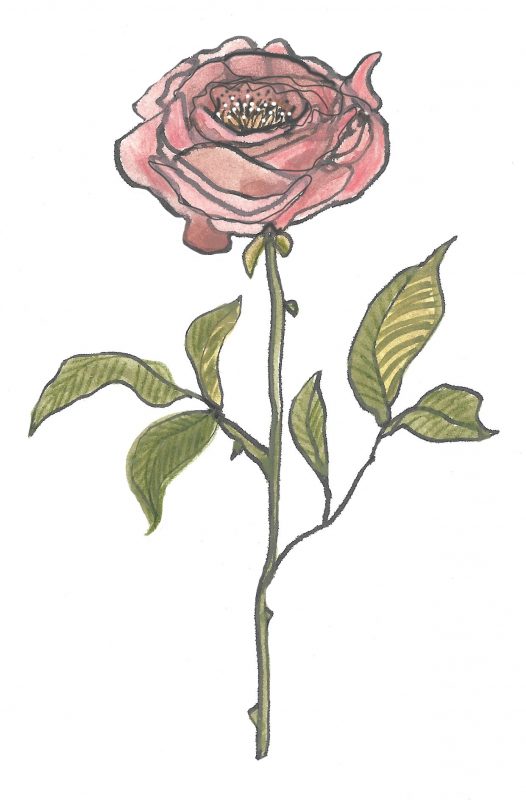 Rose (Rosa)
Rose (Rosa)
The first evidence of blossoming roses comes from a period 40-35 million years ago. Fossils have been found in Norway, Germany, Balkans, Alaska, Mexico, and some other locations. Arab physician Avicenna used rose infusions to treat skin disorders and mixed it with honey to use as a cough syrup.
Wesley’s recommendations:
32 – Chin-Cough or Hooping Cough – Half a pint of milk warm from the cow, with the quantity of nutmeg or conserve of roses dissolved in it every morning.
63 – Violent Coughing from a Sharp and Thin Rhuem – Work into old conserve of roses as much as can of pure frankincense powdered as fine as possible. Take a bolus of this twice or thrice daily.
Other therapies
Rose hips can be used in cough mixtures, syrups, jellies, and jams. Their high vitamin C content and fruit acids, as well as beta-carotene, pectin and tannin content, boost the body’s immune system.
Hyssop (Hyssopus officinalis)
Hyssop was used in ancient Greece and Rome for a variety of ailments. Its name comes from the Hebrew word for “holy herb”. It has been used as a tool for sprinkling in rituals, symbolizing purification and cleansing. It has also been used for centuries in traditional medicine in order to increase circulation and to treat multiple conditions such as coughing and sore throat.
Wesley’s recommendations:
49 – A Consumption – Turn a pint of skimmed milk with half a pint of small beer. Boil in this whey about twenty ivy leaves, and two or three sprigs of hyssop. Drink half overnight, the rest in the morning. Do this if needful, for two months daily. This has cured a desperate case.
176 – The Pleurisy – in disorders of this kind Dr Huxham advises “Sip almost continuously thin whey, barley water, or hyssop tea, sharpened with vinegar and water or lemon juice.
Other therapies
Modern research is exploring the use of hyssop for its anti-asthmatic properties, particularly in cases of mild to moderate asthma.
One in a deep consumption was advised to drink nothing but water and eat nothing but watergruel, without salt or sugar. In three months time he was perfectly well – JOHN WESLEY



